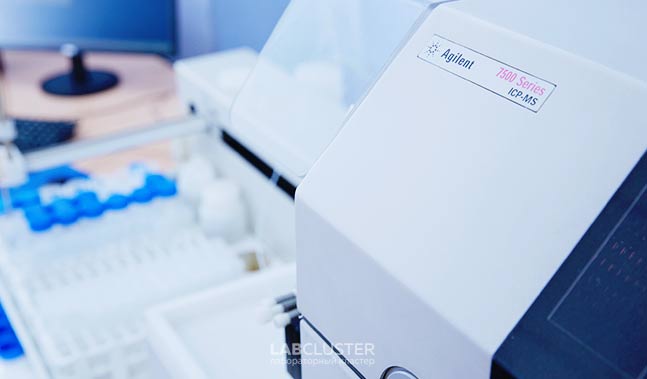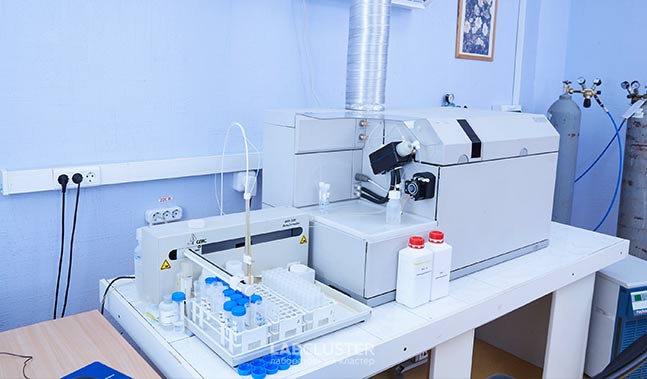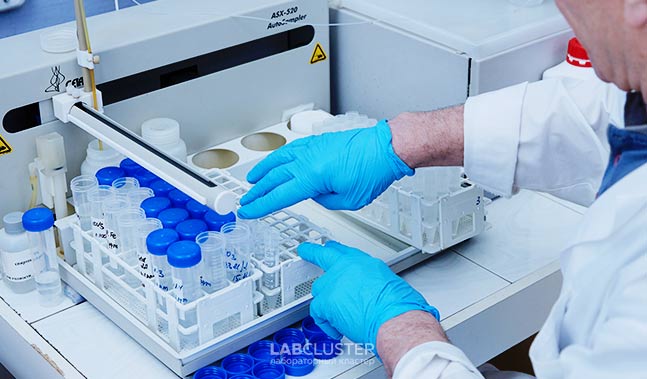In the method of optical emission spectrometry, sample particles entering the plasma, the temperature of which varies between 6000-10000 K, are subjected to the processes of dissociation of molecules, ionization, atomization and excitation. In the method of optical emission spectrometry, sample particles entering the plasma, the temperature of which varies between 6000-10000 K, are subjected to the processes of dissociation of molecules, ionization, atomization and excitation. The optical system of the spectrometer focuses the radiation emitted by excited atoms and ions on the output slit and further decomposes it into wavelengths using a diffraction grating. Each element is able to emit a series of spectral lines corresponding to electronic transitions between different energy levels and shells. It is necessary to choose the optimal emission line to measure the mass concentration of the element in the sample. Emission in inductively coupled plasma can be observed in two ways: radial and axial. In the radial view of the plasma, the radiation is observed perpendicular to the current of plasma gases, and in the axial view, it is observed in parallel. A lower background of scattered radiation, an increase in the exposure time of particles in the axial mode provides lower detection limits in comparison with the radial method of viewing the plasma. Spectrometers that allow double plasma viewing have a wide linear operating range of concentrations and better detection limits. Depending on the analysis tasks, atomic emission ICP spectrometers can be classified: by the measurement principle (sequential, parallel, combined), by the range of defined wavelengths (various combinations of spectrum regions: UV, vacuum and visible UV, visible region), by the resolution of the monochromator (high (<0.005 nm) and low (>0.01 nm)), by the maximum power of the HF generator (< 1.5 kW, < 2.5 kW, > 2.5 kW), by the plasma gas (Ar/Ar, N2/Ar, O2/Ar).

In the method of mass spectrometry with ICP, the analysis can be performed for both aqueous solutions of samples and for solid samples. In case of a solution: a small volume of the sample (1 cm3 / min) is pumped by a peristaltic pump into the spray chamber and mixed with argon, from where it enters the plasma via an aerosol sprayer. Passing through the interface and the optical ion system, the detected ions in the quadrupole mass analyzer are separated by mass selection. In the process of sample preparation, possible spectral interference caused by acids and other reagents should be taken into account, for example, the formation of such ions as ClO+, ArCl+, ArN+, SO+, SO2+. It is most preferable to use nitric acid (1% solution) for sample preparation. Mass spectrometers can be classified according to the method of ion flow entering the mass analyzer into two types: continuous and pulsed (ions enter the analyzer in portions).

As a rule, the methods of ICP-AE and ICP-MS use aqueous solutions of a research object, or solid samples converted to a dissolved form. However, these methods can be used to analyze solid samples without converting a sample to a solution. Atomic emission spectrometry offers the following method: a sample (several milligrams) is placed in a graphite crucible, which is inserted with a quartz rod into the burner, where the sample, being in the lower part of the plasma, is subjected to pyrolysis. Next, the sample is moved to the center of the plasma, where evaporation occurs, and the emitted light is measured using a simultaneous-action spectrometer. In plasma mass spectrometry, devices with laser abelation are used for the analysis of solid samples. Here, the sample is fed to the plasma by evaporation and atomization of sample particles from the surface of the material by the action of a laser beam.
Our laboratory has an optical emission spectrometer with inductively coupled plasma iCAP 6300 Duo and a mass spectrometer with inductively coupled plasma Agilent 7500A. These devices allow multi-element analysis in a large linear range of concentrations at a high speed of analysis. The area of the laboratory's accreditation allows analyzing a wide range of research objects using ICP-AE and ICP-MS methods, such as water (natural, drinking, waste), soils, bottom deposits, solid waste, biomaterials, atmospheric air, occupational air, industrial emissions into the atmosphere. The area of the laboratory's accreditation allows analyzing a wide range of research objects using ICP-AE and ICP-MS methods, such as water (natural, drinking, waste), soils, bottom deposits, solid waste, biomaterials, atmospheric air, occupational air, industrial emissions into the atmosphere.
Price list for all types of research in LABCLUSTER






